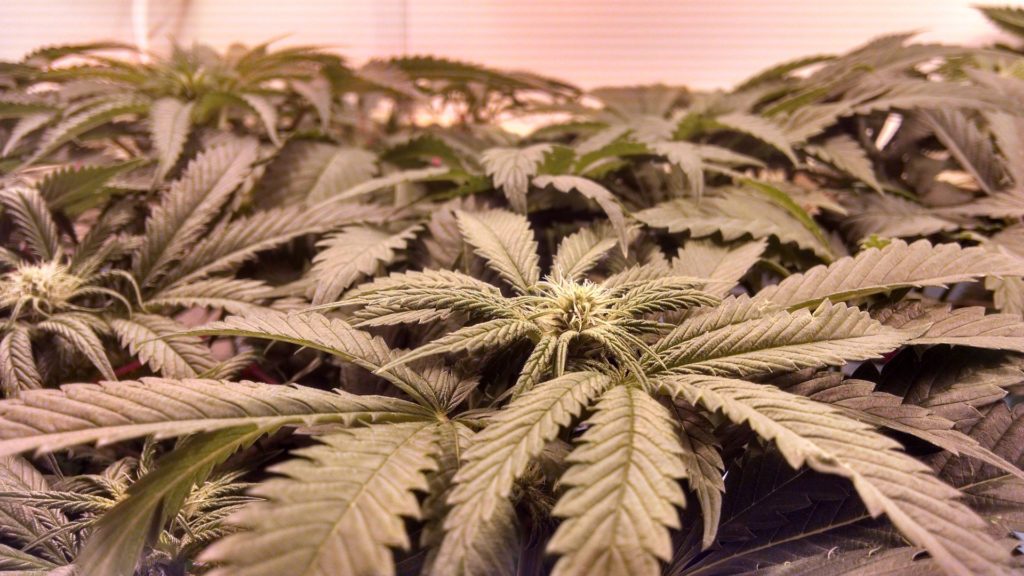
Originally from Central Asia, cannabis is grown in many parts of the world today. The buds of the Cannabis sativa plant are covered in a sticky dusting of crystal resin, that contains therapeutic compounds known as cannabinoids.
There are far more cannabinoids than have been discovered. The Drug Enforcement Administration (DEA) has classified cannabinoids as a Schedule I controlled substance, the same as LSD and heroin. Owing to such regulatory barriers, the scientific inquiry and research of cannabis is difficult. However, earlier this year, the National Academy of Sciences released a new report that reviewed 10,000 scientific abstracts and reached almost 100 conclusions regarding the medical uses of marijuana and cannabis- derived products. The report suggests, “Political and non-political strategies to resolve regulatory barriers to cannabis research, an objective and evidence-based analysis of cannabis policy is necessary.”
What are cannabinoids?
Cannabinoids are active chemicals that bind to cannabinoid receptor sites located in the body. In the early 1990s, scientists discovered that the human brain creates its own set of cannabinoids via the endocannabinoid system, which is responsible for functions such as appetite, sleep, emotion and movement.
Cannabinoids activate two types of receptors:
• CB1 receptors that are located in the central nervous system (brain and nerve endings)
• CB2 receptors that are located within the immune system
The three types of cannabinoids that can bind to these protein receptor sites are endocannabinoids (produced naturally by the body), phytocannabinoids (found in plant resin extracts), and synthetic cannabinoids (manufactured artificially).
These chemical compounds cause drug-like effects throughout the body, such as slower reaction time and impaired judgment. Many cannabinoids are psychoactive, meaning that they act on the brain to create changes in mood or consciousness.
How many types of cannabinoids are there?
Of the 480 different compounds present in the cannabis plant, only around 66 are called cannabinoids. The different subclasses of cannabinoids are:
• Cannabigerols (CBG)
• Cannabichromenes (CBC)
• Cannabidiol (CBD)
• Tetrahydrocannabinol (THC)
• Cannabinol (CBN)
• Cannabinodiol (CBDL)
• Other cannabinoids including cannabicyclol (CBL), cannabielsoin (CBE) and cannabitriol (CBT)
What are THC and CBN?
Delta-9-tetrahydrocannabinol (Δ9-THC), better known as THC, is the main psychoactive ingredient in cannabis. CBD is the most abundant of all cannabinoids, making up nearly 40% of the resin sample. When THC is exposed to the air, it becomes oxidized and forms CBN, which also interacts with THC to lessen its impact. Thus, CBN provides anxiety relief by counteracting the psychoactive effects of THC. It is for the same reason why cannabis that has been left out unused will have less potent effects when smoked. This is due to the increased CBN to THC ratio.
Are there any practical uses for cannabinoids?
As scientific projects concerning cannabinoids increase around the globe, the medical advantages of cannabis is continually been investigated. Possible benefits of cannabinoids include:
• Anti- inflammatory activity
• Blocking cell growth
• Preventing the growth of blood vessels that supply tumors
• Antiviral activity
• Relieving muscle spasms in multiple sclerosis
Dustin Sulak, doctor at Maine Integrative Healthcare, has recommended various forms of medical cannabinoids to his patients. The results were dramatic in patients with chronic pain, multiple sclerosis and severe inflammatory bowel syndrome. As stated by Dr. Sulak, “These responses are the most impressive to me. With inflammatory bowel disease, we’ll see patients who were at death’s door turn around dramatically.”
In a controlled animal study published in December 2014, researchers investigated intervertebral disc degeneration in 19 rats by using needle punctures to injure their spinal discs in the tailbone area. The subjects were split into three groups, and each immediately treated with a different concentration of CBD (30, 60, or 120 nmol). The results showed that the administration of CBD helped reduce the damage caused by intervertebral degeneration.
As many states consider limited legalization of cannabinoids like CBD, the integration of whole plant medicine is being widely debated. The interactive synergy between marijuana compounds has been referred to as the “entourage effect”. In his study Taming THC: Potential Cannabis Synergy and Phytocannabinoid- Terpenoid Entourage Effects, neurologist Dr. Ethan Russo reveals how cannabis compounds influence each other’s mechanisms. For example, myrcene reduces resistance in the blood brain barrier, while pinene helps cognition and memory. When a combination of myrcene, pinene and caryophyllene is used, anxiety levels go down.
CBD derived from Industrial Hemp
Hemp-derived products are suggested to have the same properties as cannabis-derived CBD, making them a sustainable alternative for patients who do not have legal access to medical marijuana in certain states. There is a viable legal argument that the production and distribution of CBD oils and products derived from industrial hemp is not in violation of the Controlled Substances Act (CSA). Some facts pertaining to this issue include:
• Medical marijuana and agricultural hemp are both derived from the Cannabis sativa plant.
• Agricultural hemp is often called “hemp stalk”.
• Agricultural hemp has physical properties closely resembling bamboo.
• While THC-containing cannabis plants are raised to an average height of five feet and spaced six to right feet apart, agricultural hemp is grown as high as 10 to 15 feet and placed three to six inches apart.
• When pollinated by members of the same crop, hemp plants show little ability to produce high-content THC.
What does the future hold for cannabinoids?
In March, a Florida House Budget Panel approved a proposal that would send $2.462 million to the University of Florida for research on issues such as the effectiveness of medical marijuana in treating patients. The proposal (HB 3159) is related to a 2014 law that legalized non-euphoric cannabis for patients with a limited number of conditions, such as children who suffer from severe seizures.
The future of cannabinoids is best summarized by Democratic Representative from Oregon, Earl Blumenauer:
“The number of men and women in Congress who are now going to represent state legal businesses [will see] a quantum increase as a result of the legalization of recreational marijuana in California, and the creation of a medical market in Florida.”
Author Bio:Bota Hemp is a one-stop store for tinctures, creams and capsules. Recently,CannaInsiderranked two of Bota Hemp’s products, CBD Tincture Full Spectrum and Pure Relief Topical CBD Salve, as one of the top 18 CBD Oil products available on the market. Using premium hemp that is non-GMO and pesticide-free, Bota Hemp provides a certificate of analysis for all its products, as well as ships to all 50 states. For more information on healthy lifestyle choices and CBD, you can contact themhere.




